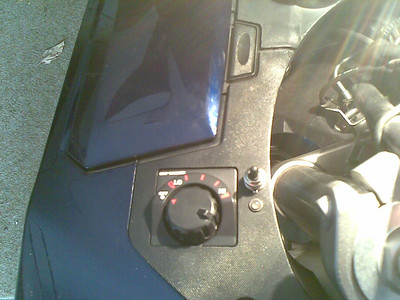If you are going to put a ground bus at the front, just tie it directly to battery ground. No point running an "unnecessary" wire back to the Fuzeblock!

Ja well, you see, part of the reason for the Fuzeblock was to reduce all those extra wires going to the battery.

Currently I have 3 additional wires going to the battery (listed in the order in which they arrived on the bike):
- CTek battery tender
- Fuzeblock
- Datel volt meter
Not sure if there's room on that -ve battery terminal for a 4th wire.

I'll probably just create my own paired wire by threading the + and - wires through one of those wire guides and run the two of them to the front. Thanks again fro the advice.






